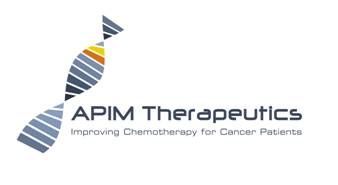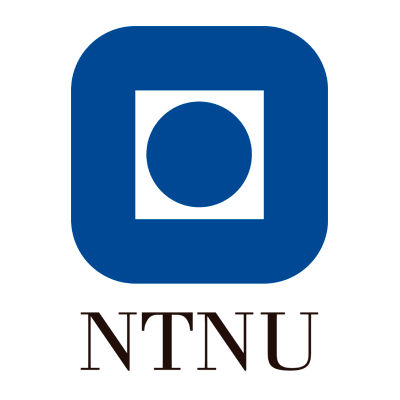预约演示
更新于:2025-05-07
Therapim Pty Ltd
私营公司
私营公司
更新于:2025-05-07
概览
关联
1
项与 Therapim Pty Ltd 相关的药物靶点 |
作用机制 PCNA调节剂 |
最高研发阶段临床2期 |
首次获批国家/地区- |
首次获批日期- |
3
项与 Therapim Pty Ltd 相关的临床试验NCT04814875
Phase 1b/2a Study Investigating ATX-101 in Combination With Platinum-based Chemotherapy in Platinum-sensitive, Recurrent Ovarian, Fallopian Tube and Primary Peritoneal Cancer
This is a Phase 1b/2a multicenter study, which consists of two parts:
Part 1: the Phase 1b part of the study will investigate the safety of the combination of ATX-101 with carboplatin/pegylated liposomal doxorubicin (ACD). ATX-101 will be administered intravenously in three escalation cohorts: 20, 30, and 45 mg/m² according to a 3+3 design. In the case where 20 mg/m² is not tolerated, the dose can be de-escalated to 15 mg/m².
Part 2: the Phase 2a part of the study will investigate the efficacy and safety of ACD.
ATX-101 will be administered at the dose defined in Part 1 of the study.
Treatment will continue up to six cycles or until disease progression or unacceptable toxicity, participant withdrawal of consent, non-compliance, lost to follow-up, or withdrawal at the Investigators discretion, whichever occurs first.
Part 1: the Phase 1b part of the study will investigate the safety of the combination of ATX-101 with carboplatin/pegylated liposomal doxorubicin (ACD). ATX-101 will be administered intravenously in three escalation cohorts: 20, 30, and 45 mg/m² according to a 3+3 design. In the case where 20 mg/m² is not tolerated, the dose can be de-escalated to 15 mg/m².
Part 2: the Phase 2a part of the study will investigate the efficacy and safety of ACD.
ATX-101 will be administered at the dose defined in Part 1 of the study.
Treatment will continue up to six cycles or until disease progression or unacceptable toxicity, participant withdrawal of consent, non-compliance, lost to follow-up, or withdrawal at the Investigators discretion, whichever occurs first.
开始日期2021-09-01 |
申办/合作机构 Therapim Pty Ltd [+1] |
ACTRN12618001112257
A long term follow up study, to evaluate the long term safety and efficacy, of single agent ATX-101 given by intravenous infusion once every week in patients with advanced solid tumours
开始日期2018-12-11 |
申办/合作机构 |
ACTRN12618001070224
A phase 1 dose escalating study to determine incidence of dose limiting toxicities of single agent ATX-101 given by intravenous infusion every week in patients with advanced solid tumours
开始日期2018-10-15 |
申办/合作机构 |
100 项与 Therapim Pty Ltd 相关的临床结果
登录后查看更多信息
0 项与 Therapim Pty Ltd 相关的专利(医药)
登录后查看更多信息
2
项与 Therapim Pty Ltd 相关的文献(医药)2023-02-10·Oncogene
ATX-101, a cell-penetrating protein targeting PCNA, can be safely administered as intravenous infusion in patients and shows clinical activity in a Phase 1 study
Article
作者: Kichenadasse, Ganessan ; Marschner, Jens-Peter ; Millward, Michael ; Alevizopoulos, Konstantinos ; Lemech, Charlotte Rose ; Otterlei, Marit
2021-05-20·Journal of Clinical Oncology
Safety profile and disease stabilization in late stage, heavily pretreated, solid tumor patients in a first-in-human (FIH) study of ATX-101, a drug targeting proliferating cell nuclear antigen (PCNA).
作者: Kichenadasse, Ganessan ; Alevizopoulos, Kostas ; Marschner, Jens-Peter ; Millward, Michael ; Lemech, Charlotte Rose ; Otterlei, Marit
100 项与 Therapim Pty Ltd 相关的药物交易
登录后查看更多信息
100 项与 Therapim Pty Ltd 相关的转化医学
登录后查看更多信息
组织架构
使用我们的机构树数据加速您的研究。
登录
或

管线布局
2026年01月07日管线快照
管线布局中药物为当前组织机构及其子机构作为药物机构进行统计,早期临床1期并入临床1期,临床1/2期并入临床2期,临床2/3期并入临床3期
其他
1
登录后查看更多信息
当前项目
| 药物(靶点) | 适应症 | 全球最高研发状态 |
|---|---|---|
ATX-101 (APIM Therapeutics) ( PCNA ) | 原发性腹膜子宫内膜样腺癌 更多 | 终止 |
登录后查看更多信息
药物交易
使用我们的药物交易数据加速您的研究。
登录
或

转化医学
使用我们的转化医学数据加速您的研究。
登录
或

营收
使用 Synapse 探索超过 36 万个组织的财务状况。
登录
或

科研基金(NIH)
访问超过 200 万项资助和基金信息,以提升您的研究之旅。
登录
或

投资
深入了解从初创企业到成熟企业的最新公司投资动态。
登录
或

融资
发掘融资趋势以验证和推进您的投资机会。
登录
或

生物医药百科问答
全新生物医药AI Agent 覆盖科研全链路,让突破性发现快人一步
立即开始免费试用!
智慧芽新药情报库是智慧芽专为生命科学人士构建的基于AI的创新药情报平台,助您全方位提升您的研发与决策效率。
立即开始数据试用!
智慧芽新药库数据也通过智慧芽数据服务平台,以API或者数据包形式对外开放,助您更加充分利用智慧芽新药情报信息。
生物序列数据库
生物药研发创新
免费使用
化学结构数据库
小分子化药研发创新
免费使用

